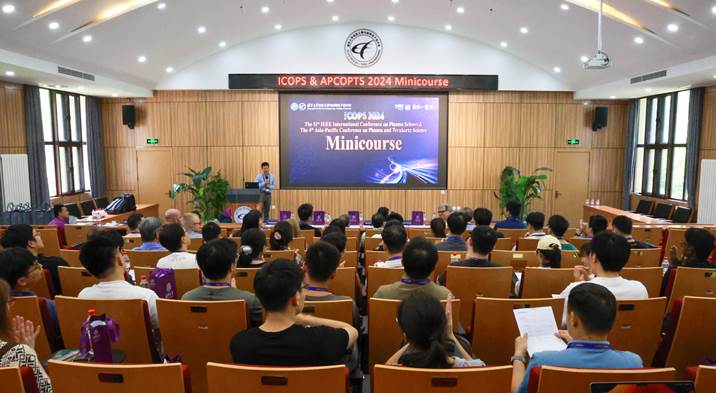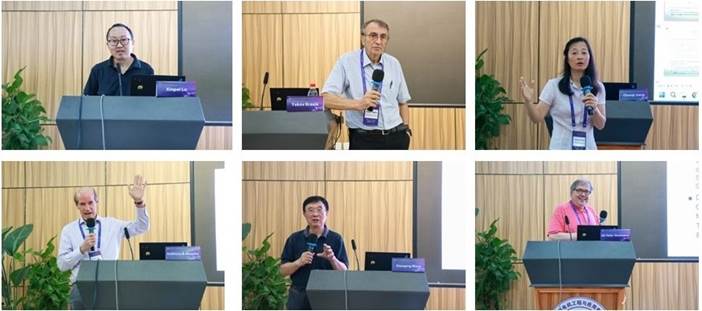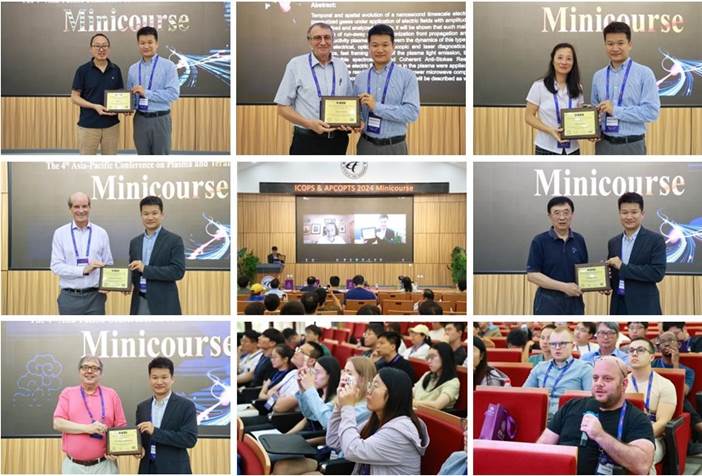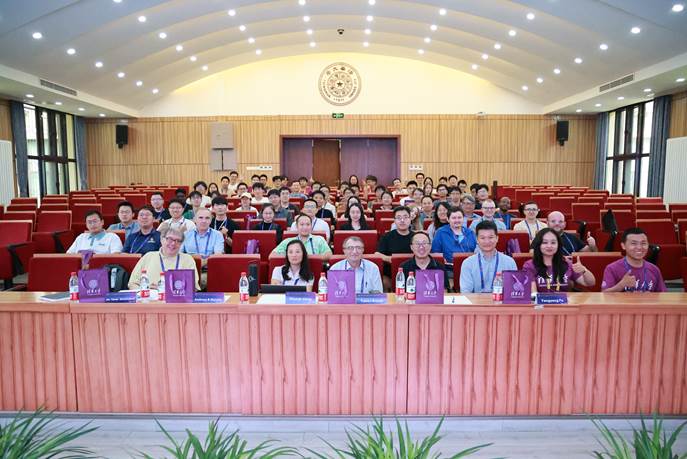On June 20 and 21, the Minicourse segment of the 51st IEEE International Conference on Plasma Science (ICOPS) and the 4th Asia-Pacific Conference on Plasma and Terahertz Science (APCOPTS) were successfully held in Room 3-217 of the Department of Electrical Engineering and Applied Electronics (EEA). ICOPS & APCOPTS is an annual meeting organized by the Plasma Science and Applications Committee (PSAC) of the Nuclear and Plasma Sciences Society (NPSS), and this year it was held for the first time in China. The conference was hosted by China Electrotechnical Society and the Institute of Electrical Engineering of the Chinese Academy of Sciences, with the Gas Discharge and Plasma Laboratory of EEA as one of the co-organizers.

The Minicourse was chaired by Associate Professor Fu Yangyang, Deputy Director of the High Voltage Institute, and Associate Professor Zhang Peng from Michigan State University. Invited lecturers included Professor Lu Xinpei from Huazhong University of Science and Technology, Professor Yakov Krasik from the Technion - Israel Institute of Technology, Professor Chunqi Jiang from Old Dominion University, Chief Scientist Anthony B. Murphy from the Commonwealth Scientific and Industrial Research Organisation in Australia, Professor Mark D. Johnston from Sandia National Laboratories (online), Professor Wang Xiaogang from Harbin Institute of Technology, and Professor Jon Tomas Gudmundsson from the University of Iceland. The event attracted over 80 young scholars from both domestic and international backgrounds.

The Minicourse training covered the latest advances in fundamental theories, key technologies, and frontier applications in the field of plasma technology. Professor Lu Xinpei systematically explained cold plasma jets, new methods for non-isothermal dielectric barrier discharge, magnetic-free helical discharge, and the applications of plasma in medicine and energy conversion. Professor Yakov Krasik introduced the mechanisms of escape electrons, ionization front propagation, and the formation of high conductivity plasma channels in nanosecond pulse discharges, using various experimental methods for diagnosis. Professor Chunqi Jiang focused on atmospheric pressure non-equilibrium plasma and presented its cutting-edge applications in energy, environment, agriculture, and medicine. Professor Anthony B. Murphy’s report centered on thermal plasma, clarifying the key concepts of local thermodynamic equilibrium (LTE) and its dependence on high collision rates, discussing various methods for generating thermal plasma and explaining the modeling process. Professor Mark D. Johnston provided an overview of low-temperature plasma, describing the physical mechanisms involved in plasma generation through electron-atom collisions, electron and ion transport processes, chemical reactions, and surface processes. Professor Wang Xiaogang mainly introduced the system design and recent progress of the Space Environment Simulation and Research Infrastructure (SESRI), a ground experimental device built at Harbin Institute of Technology for laboratory simulation of space environments. Professor Jon Tomas Gudmundsson showcased the development of sputtering from DC diode to magnetron sputtering discharge, and through ionization models, he analyzed the discharge characteristics and plasma parameters of various magnetron sputtering configurations.

After the lectures, the young scholars actively engaged in discussions with the lecturers, exchanging questions and answers. Fu Yangyang presented certificates to all the guest lecturers.

This Minicourse training provided young scholars with forward-looking and cutting-edge thematic courses, while also offering a platform for close communication with internationally renowned experts in the field. As the final segment of ICOPS & APCOPTS 2024, it marked the successful conclusion of the conference.


















 News & Events
News & Events